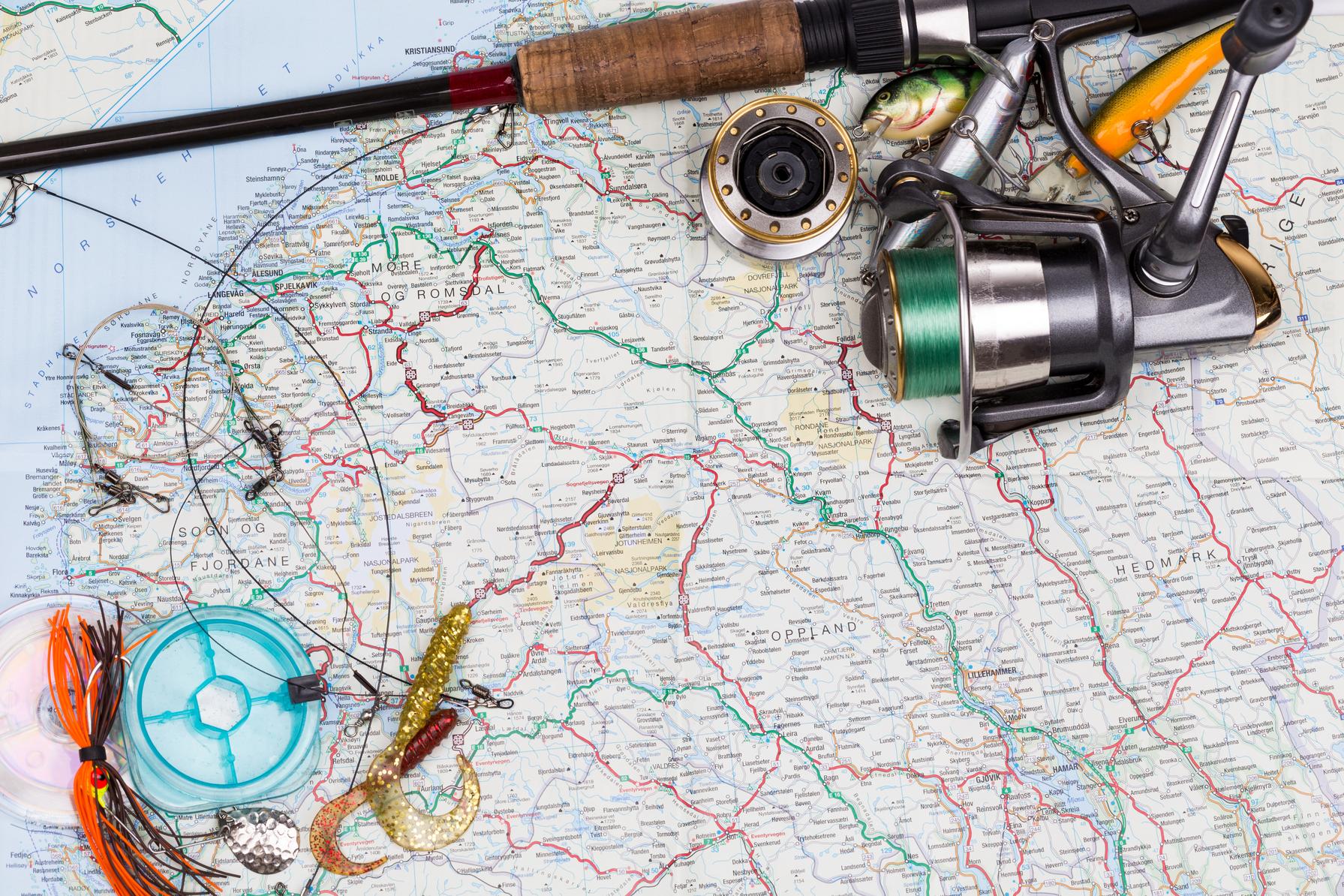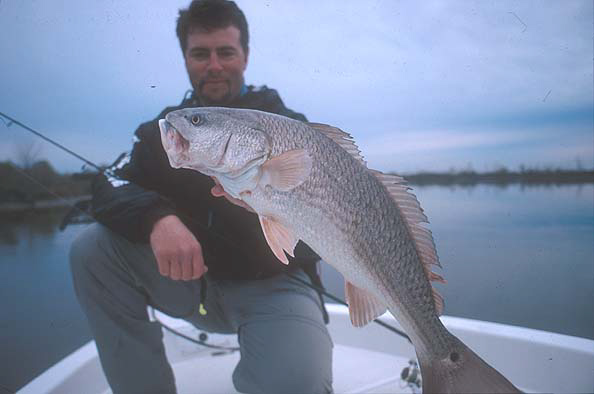Holiday Boating: Some Like It Cold
When they have a winter holiday, or any time off at all, a surprising number of fishermen, paddlers, surfers, and sailors can’t stay away from the water, even in the coldest weather
When most people who love boats see snow and ice ouside their window, they begin dreaming of summer or start looking for travel deals to the islands. But some get motivated to fish, sail, paddle, or shoot, and they head to the water's edge instead. What's up with that?
Iceboating
There’s no faster sailing craft than what’s known as an iceboat, which is typically equipped with one sail, a narrow hull or fuselage, an athwartships runner plank, and three blades, known as runners. Why so fast? There’s virtually no friction when they’re sailing on smooth ice, and the only significant drag component in their boat-speed equation is the windage created by sail, mast, hull, and sailor.
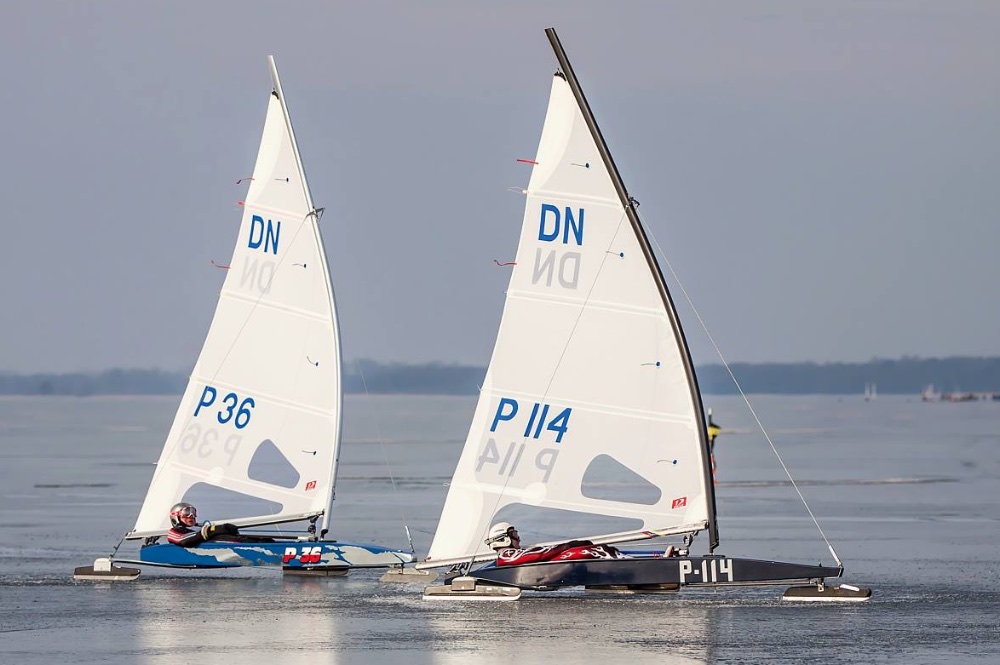
DN iceboats sail across a frozen lake at high speeds; these 12-foot long, one-person “boats” race as an international class in Europe and North America.
DN iceboats, such as those in our photo, are small craft, often home built. The sailor lies down on the hull to minimize windage and holds a forward-facing tiller to control the front runner blade. The other hand trims the mainsheet.
We once had the chance to sail a DN in light winds, and the beauty of these boats is how quickly they can sail in the lightest wind— easily up to 20 MPH. In a stronger wind, they can go over 50. Needless to say, due to wind chill and safety concerns, insulated clothing and helmets are required. Our main issue in light winds, however, was that our neck muscles gave out after a while, and we had to use one hand to support our helmet while trying to steer and trim with the other.
Oh yeah. Just in case you think 50 is fast for a sailing craft. Try an E-Skeeter iceboat, which resembles a jet fighter and has an enclosed cockpit to minimize both windage and wind chill. These custom-built boats often record speeds in the 100 MPH range.
Did we mention that sailors of iceboats like to race against each other? Just imagine crossing tacks with closing speeds of 100 MPH or more. Or better yet, watch this Sail Racing video; photos don’t do these boats justice:
Frostbite Sailing
What about when the water isn’t solid yet? Do sailors still go out racing in mid-winter? Well, yes they do, and with typical gallows humor, they call it “frostbite sailing” or simply “frostbiting”. Racing happens throughout many of the northern states in dozens of harbors and rivers as long as there’s enough room among the ice floes. One of the biggest fleets is in Newport, R.I., where these photos were taken. Founded in 1983, Fleet 413 had 100 sailors register for last year’s season of Sundays, which runs November through March.
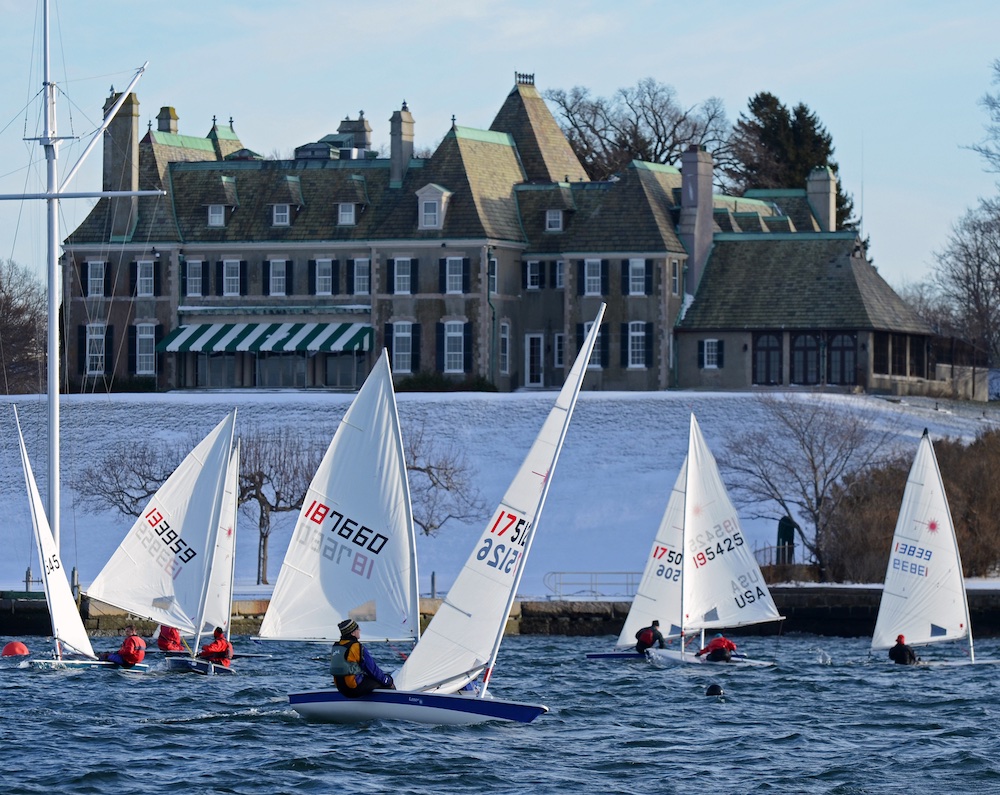
Laser Fleet 413 races on a brisk day with the snowy lawn of the New York Yacht Club as a back drop; the racers launch out of the Sail Newport drysail area, just across the cove. Jeff Stevens photo.
We’ve done a bit of this ourselves, to be honest, it’s not as uncomfortable as it looks. First, you wear a drysuit plus layers as necessary, and if you’re smart, you’ll check for leaks in advance. If you’re prepared, it’s similar to a day of skiing. Sometimes colder, sometimes warmer, but more often than not, an exquisite experience that gives you a warm glow—especially when the blood starts returning to your toes and fingers.
Races are conducted in protected harbors and bays in small boats. On a windy day, the icy spray can get intense. But there are several short races packed into a two-hour period, with little waiting time between races, so you rarely have the equivalent of that long chair-lift ride to cool down. Sailing involves lots of maneuvers and you really work it, hiking out to keep your boat upright.
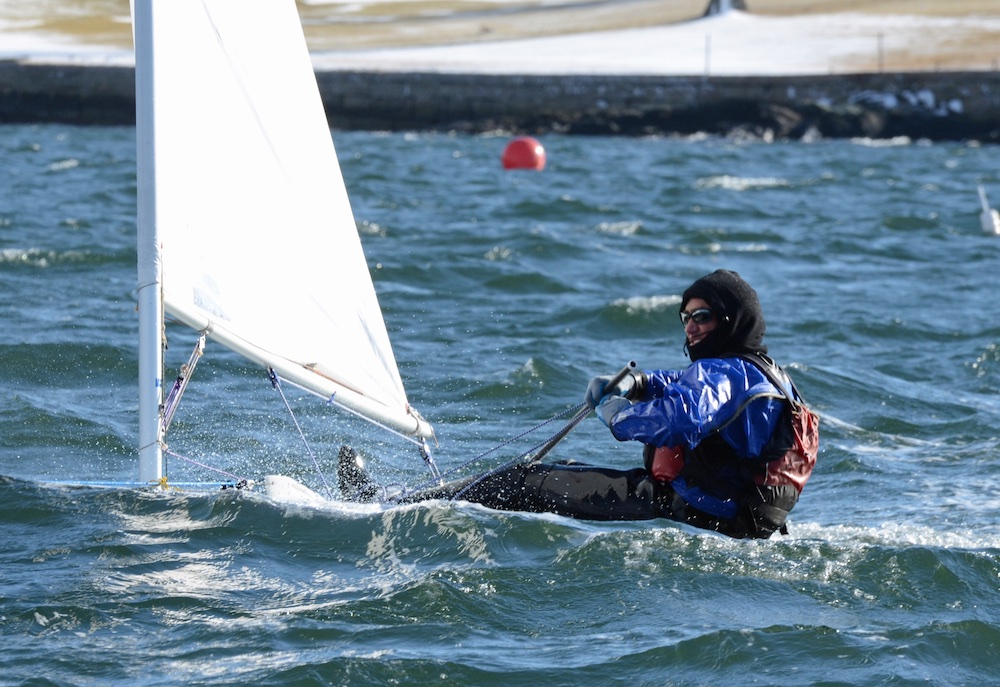
On a bumpy, windy day, a drysuit, gloves and full head gear fend off the elements for this sailor while he is hiking hard to keep his Laser dinghy level. Jeff Stevens photo.
What if you capsize? Well, safety boats are always nearby but most frostbite sailboats are self-rescuing. Depending on the conditions, you can usually continue racing. If not, the dock is usually close by.
Icebreaking, or Ice-fishing
Fishermen won’t let a little ice stop them from chasing fish on a suitable winter’s day, although they will sometimes need to turn their cherished center console into an icebreaker.
Or, they’ll substitute boots for boats when the ice completely covers their favorite fishing grounds. They will even downsize their equipment sometimes, but they won’t give up the chase.
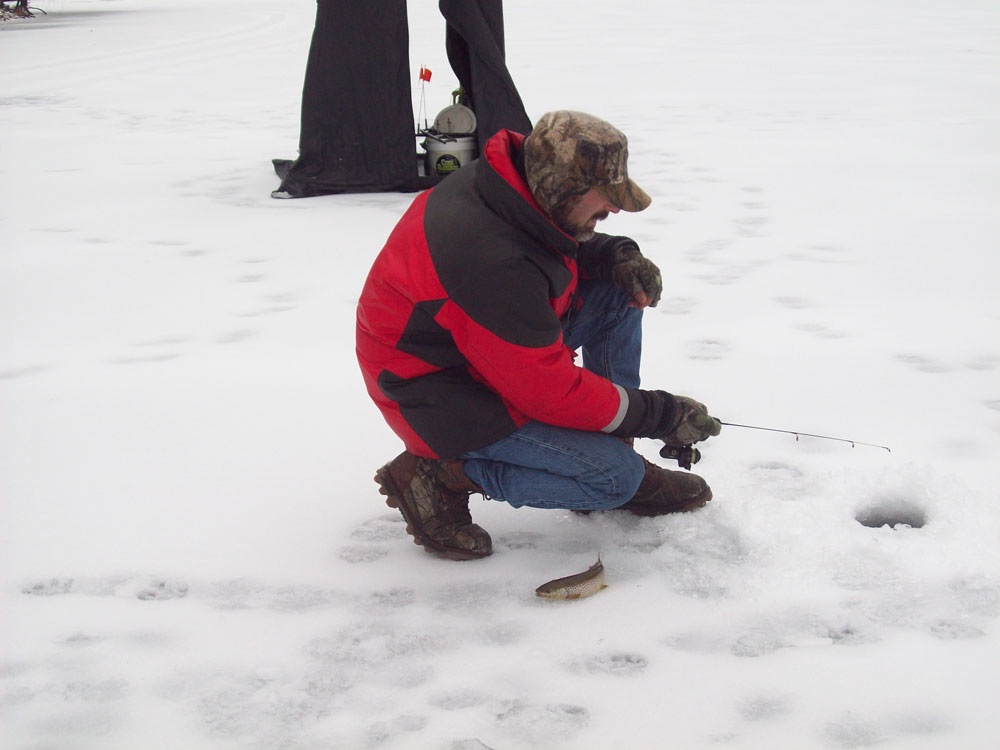
There's a fresh fish dinner following a successful trip on the ice. Added bonus: you don't have to haul a cooler and ice. Photo by Mollie Rudow.
We asked our boats.com fish guru Lenny Rudow what he’d be doing over the holidays if the ice gets in the way—and to describe his fishing rig and technique in this extraordinary photo we obtained recently. Here’s what he wrote:
“I’ve got my pop-up ice hut ready to roll, fresh two-pound test on the ice rods, and a serious hankering to set some tip-ups (those little contraptions you set over the ice hole, with flags that pop up when a fish eats your bait). It might not be like marlin fishing, but when you spend hours on end chipping holes in a frozen lake and then shivering over them, the strike of a six-inch bluegill is enough to trigger a full-blown spiritual epiphany.”
Waterfowl Hunting
Hunting for ducks and geese is another cold-weather pastime for Rudow, his friends, and his family. Over the holidays, waterfowl hunting is always in season somewhere (check your local regulations!); in Maryland, along with his network of hunting friends, Rudow has his duck boat ready to roll out of the backyard on a moment’s notice.
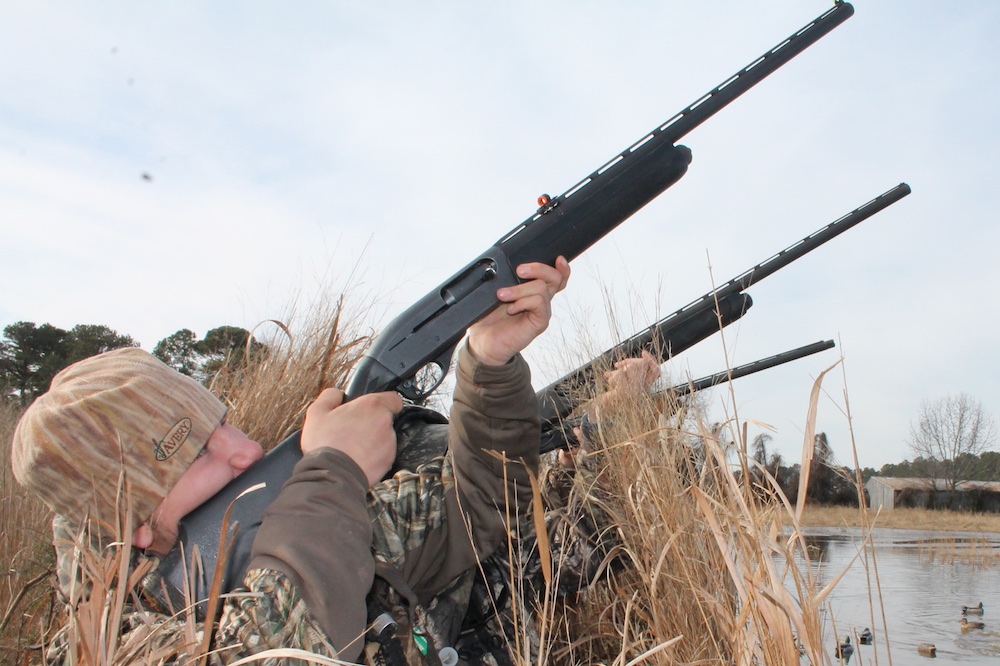
They boys take aim, while Dad shoots only with his camera. Rudow admits that as far as the bag limit goes, the results are not much different than when he's shooting with the shotgun.
“Waterfowl hunting is a great way to bond with my boys. We run our little 14’ Polar Kraft through the marshes in the pre-dawn hours, and park it along the creek bank in a likely looking spot. Then we use our calls and decoys to lure the birds in close, and make a monstrous amount of noise with our shotguns to scare them all away. On extremely rare occasions, we actually knock down a goose or a duck, and our 104-pound golden retriever, Copper, belly-flops out of the boat to make the retrieve. You have never known true entertainment until you’ve seen a dog as big as Copper wade back to your boat through hip-deep marsh-muck, jump in, and shake.”
Sturgeon spearing
There’s another extraordinary hunting season afloat every year, and it’s in Wisconsin. Sturgeon are a fish that have been around since the dinosaurs and look the part, sometimes six feet long, weighing 100 lbs. or more. When the season to hunt sturgeon gets underway in early February, Lake Winnebago and upriver lakes are covered with thousands of ice shacks for two weeks, or until the season’s limit has been reached. Last year, 703 fish were caught and the largest weighed 147.9 lbs.. Most of the fish caught weighed in the 40 to 50 lbs. range.
Outdoors writer Pat Durkin, who is president of the Wisconsin Outdoor Communicators Association, sent us a couple photos to show what sturgeon spearing is all about.
First, it seems you build a portable sturgeon shack (rentals also available) and take it down to Lake Winnebago in February. Next, cut a refrigerator-sized hole in the ice, and place your decoy in the water. Now, from within your light-less shack, which is kept dark for better visibility, you watch and wait for a sturgeon to swim by.

At left, a fisherman stands over a refrigerator-size hole on Lake Winnebago during a recent sturgeon-spearing season, hoping one of the prehistoric fish swims into view. At right, Mike Staggs, Wisconsin’s former director of fisheries management, weighs a sturgeon at the Department of Natural Resources’ check-in/registration station on the northeastern shoreline of Lake Winnebago. Patrick Durkin photos.
What happens when you spear one? Well, we haven’t been there ourselves, but from the pictures, apparently, all hell can break loose, shacks may be overturned, even the occasional beer gets spilled. We recommend having a look at this video. You can find plenty of YouTube videos on this topic, by the way, but this one seemed best to us for its brevity and shortage of colorful language…although after a couple verses of “I’m Gonna Spear Me a Sturgeon” you may disagree.
Interested in joining in? Well, you can’t go after a sturgeon over the holidays, but you can start sharpening your spear tips for February. Unless you forgot to obtain your sturgeon license for this season back in October, in which case start planning for 2018.
Stand-up Paddleboard on Lake Michigan
Across the big lake from Wisconsin, we discovered a small Michigander community of winter paddlers and surfers who have an adventure gene and a good eye for imagery. We tracked down commercial filmmaker Seth Haley, who sent us two extraordinary photos of his friend, Karol Garrison, taking advantage of an ice break-up in 2015 to fit in a midwinter stand-up paddleboard session.
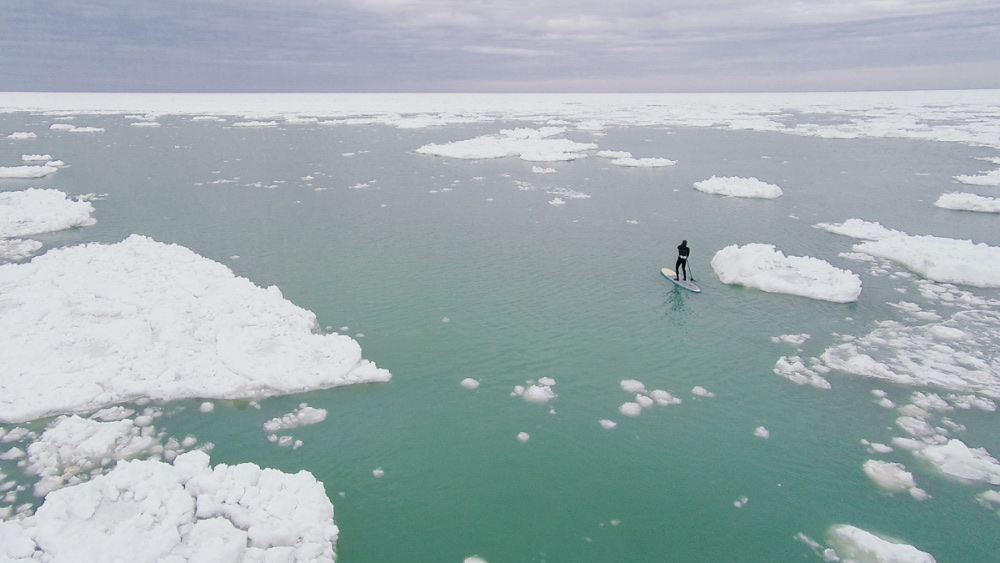
Surfing one week and riding his Stand-up paddleboard, Karol Garrison joins Lake Michigan ice in motion. Photo by Seth Haley/sethhaley.com.
“You never know whether you’ll be kayaking, surfing, or SUPing,” Haley says. “It depends on the ice and the weather. In fact, when I took these photos, we had been surfing in the same place only six days earlier. Then it froze over except for a narrow channel of the river, so we considered kayaking. But when the ice started to move, Karol got out his SUP board.”
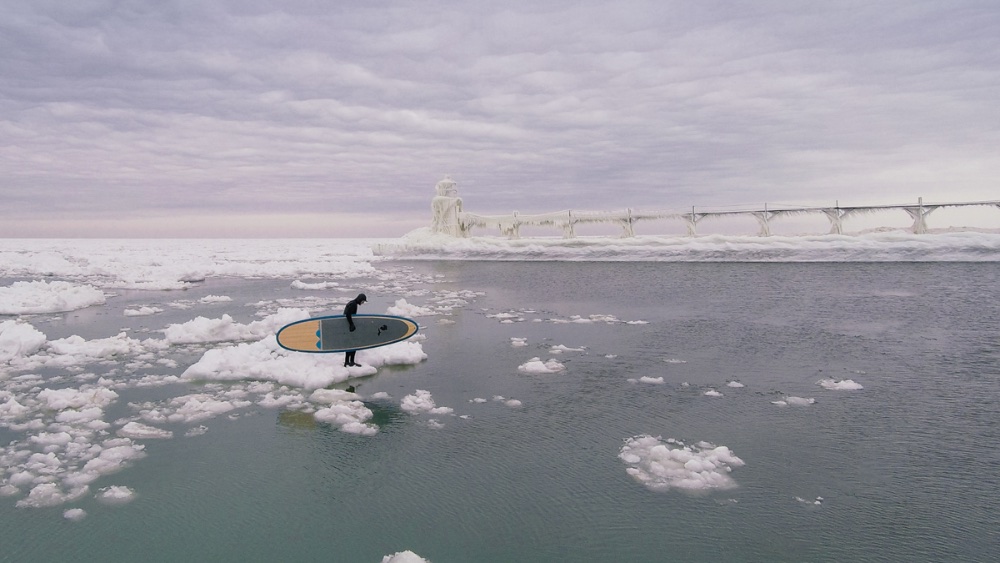
Paddleboarder Karol Garrison contemplates his own private iceberg in the icy world of the lighthouse and breakwater at the western Michigan entrance to the St. Joseph’s River. Photo by Seth Haley/sethhaley.com.
For the safety conscious in our audience, Garrison was wearing a 6/5/4 wetsuit and a lifejacket, plus he’s a former U.S. Coast Guard rescue swimmer. If this kind of activity appeals—or you want to know more about the type of folks who find it attractive— watch Haley’s video, which is beautiful, descriptive, and rather chilly-looking.
Haley, who also wore his wetsuit while filming and flying his drone from the icy pier, says, “Three hours later, we had some of the most incredible and exciting footage I have ever captured. I knew right then that showing Michigan in all of its moods, all of its weather, and all of its seasons was something I had to do. Instead of hunkering down when the cold blasts in, I want to be out there in it.”
So who are the crazy ones braving the elements of the boating world when winter shuts most folks indoors? Besides the sailors, the surfers, the paddlers, fishermen and hunters, let’s not forget the photographers. Without them, most of us would miss these moments altogether.
Editor's Note: Be on the lookout for our next Holiday Boating article, Some Like It Hot, coming soon. Don't forget to share your cold weather boating activity photos and videos with us on the boats.com Facebook page.










